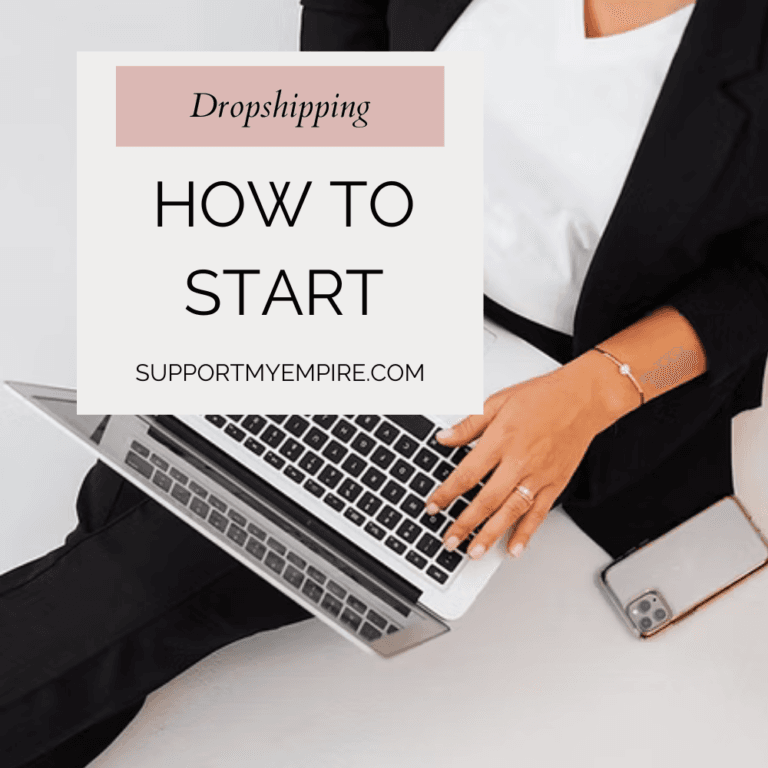Guide to Starting and Growing a Profitable Business
Starting a business is an exciting adventure, but making it profitable and sustainable takes more than just a great idea. Many entrepreneurs jump in with enthusiasm but get stuck when it comes to managing finances, marketing, and operations. How do you find practical steps and insights to overcome those challenges and build a thriving business?
Whether you’re just starting out or looking to take your business to the next level, there are a few key things you’ll need to get right—like market research, managing finances, finding suppliers, and setting prices.
Global trade policies, including tariffs, can also impact your business decisions. If you’re curious about how that works, check out our detailed blog: Tariffs: What You Need to Know.

Laying the Foundation
Getting a business off the ground starts with the right foundation. You need a solid idea, a clear understanding of your audience, and the right structure to support growth. Whether you’re brainstorming your next venture or fine-tuning an existing concept, this section will help you validate your business idea and set it up for success.
Finding a Profitable Business Idea
Identifying Market Gaps
To build a successful business, you need to spot gaps in the market. Start by researching industry trends, analyzing customer behavior, and identifying unmet needs. Pay attention to shifts in consumer preferences, emerging technologies, and economic factors that could impact demand. Keep an eye on competitors and evaluate their strengths and weaknesses—this can help you find areas where you can offer something better or different.
Validating Your Idea
Before investing time and money, it’s crucial to test whether your business idea has real potential. Conduct surveys, run focus groups, or create a minimum viable product (MVP) to gather feedback from potential customers. This will help you determine if there is genuine interest and demand for your product or service. If people are willing to pay for your solution, you’re on the right track. If not, refine your idea or pivot to something with greater potential.
Choosing the Right Business Model
Once you’ve validated your idea, decide on a business model that aligns with your skills, interests, and market opportunities. Will you sell directly to consumers (B2C) or businesses (B2B)? Will you operate online, in a physical location, or both? Consider revenue streams such as subscriptions, one-time purchases, or service-based offerings. The right model will set the foundation for sustainable growth.
Market Research & Understanding Your Target Audience
Market Research & Understanding Your Target Audience
Understanding your target audience is essential for crafting the right marketing strategies and product offerings. Consider factors like age, location, interests, spending habits, and lifestyle. The better you understand your customers, the more effectively you can reach and serve them.
Analyzing the Competition
Study your competitors to identify their strengths and weaknesses. What are they doing well? Where are they falling short? Read customer reviews, analyze their pricing strategies, and see how they engage with their audience. This will help you refine your unique selling proposition (USP) and find ways to stand out in the market.
Using Data to Refine Your Strategy
Leverage tools like Google Trends, industry reports, and social media insights to stay ahead of market changes. Surveys and direct customer interactions can also provide valuable feedback. The more data you collect, the better positioned you’ll be to make informed business decisions.
Business Structure & Legal Considerations
Choosing the Right Legal Structure
Your business structure affects everything from taxes to liability. Common options include:
- Sole Proprietorship – Simple to set up but offers no personal liability protection.
- LLC (Limited Liability Company) – Provides liability protection while maintaining flexibility.
- S-Corp or C-Corp – Suitable for businesses looking to scale and attract investors.
Registering Your Business
Once you’ve selected a structure, you’ll need to register your business with the appropriate government agencies. This may involve getting an EIN (Employer Identification Number), securing business licenses, and complying with state and local regulations.
Protecting Your Business with Contracts
Drafting strong contracts is essential for protecting your business. From supplier agreements to customer terms and conditions, well-crafted contracts can prevent legal disputes and establish clear expectations. If you plan to work with international suppliers, consider how tariffs and trade policies impact your contracts (link to our tariffs blog).
Financial Planning for Business Success
Funding Your Business
Starting a business requires capital, whether you’re bootstrapping, seeking investors, or applying for loans. Calculate your startup costs, project your revenue, and explore funding options that align with your business goals. Understanding investor expectations and financial obligations will help you make the best financing decisions.
Pricing Strategies That Maximize Profits
Setting the right price for your product or service is critical. Consider cost-plus pricing, competitive pricing, or value-based pricing models. If you’re sourcing internationally, factor in tariffs, duties, and other costs (see our tariffs blog). Psychological pricing techniques, such as charm pricing ($9.99 instead of $10), can also help boost sales.
Financial Management & Cash Flow Control
A business can be profitable on paper but still struggle with cash flow. Set up bookkeeping systems, track expenses, and plan for taxes to keep your finances in order. Consistently monitoring cash flow will help you make informed decisions and avoid financial pitfalls.
Conclusion
Starting and growing a profitable business isn’t just about having a great idea—it’s about execution, adaptability, and strategic planning. From finding the right market fit to managing finances and scaling your operations, every step you take builds the foundation for long-term success.
Now that you have a roadmap, it’s time to put it into action. Assess where you are in your business journey, set clear goals, and take one step at a time.
Grow Your Retail Empire with Proven, Scalable Strategies
Discover three ways to elevate your business—choose the path that suits your goals best.
We’ll do the heavy lifting so you can focus on running your business.
You won’t be doing this alone; we’ll walk you through every step.
No Burpees, Just Flexing! Weekly Workouts for a Stronger Bottom Line.
The Retail Gym Your Weekly Business Workout
No sweat, just success! The Retail Gym is your weekly business workout designed to help you lift your retail strategies, tone your sales skills, and flex your competitive edge—without a single burpee.


